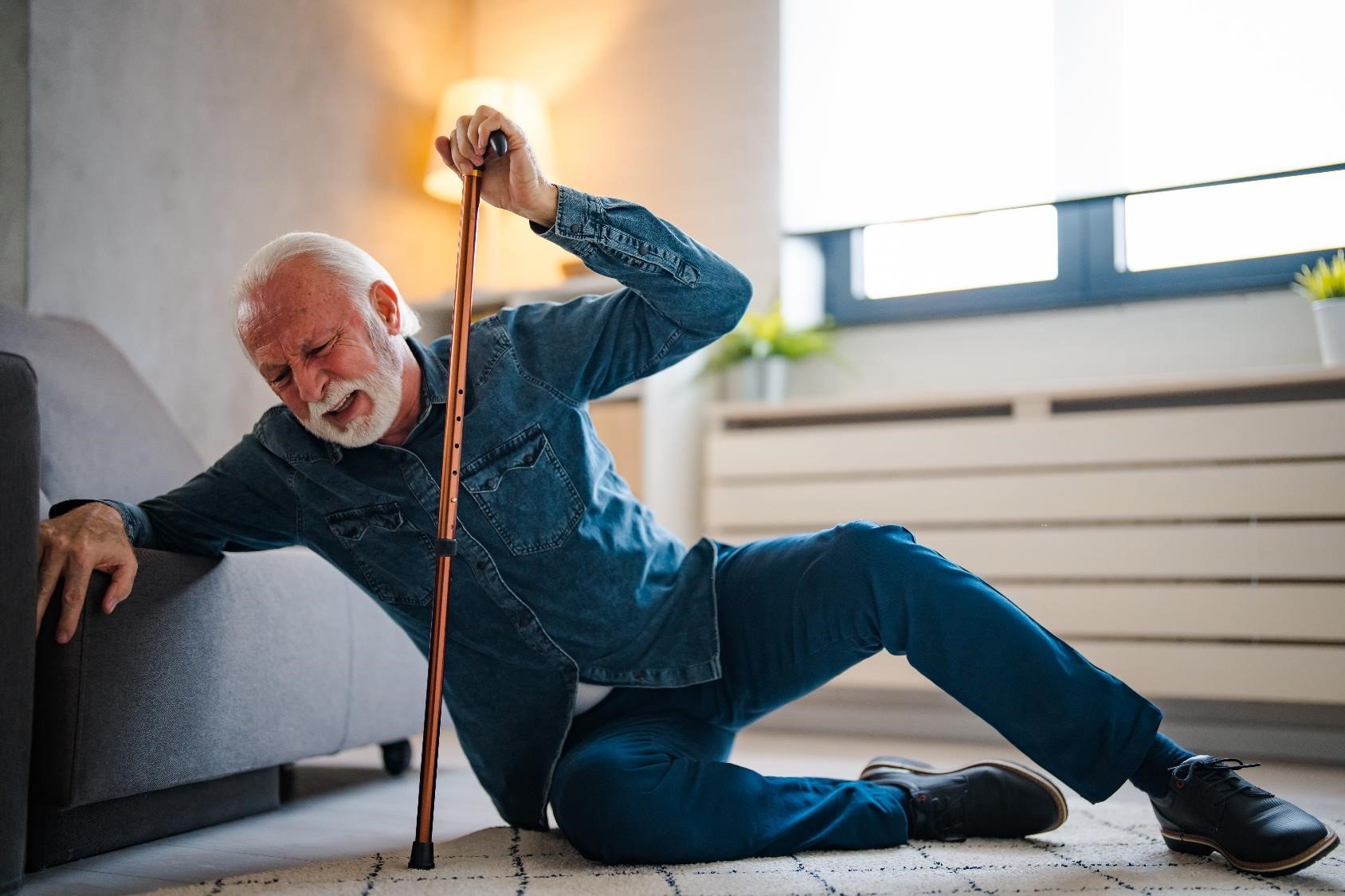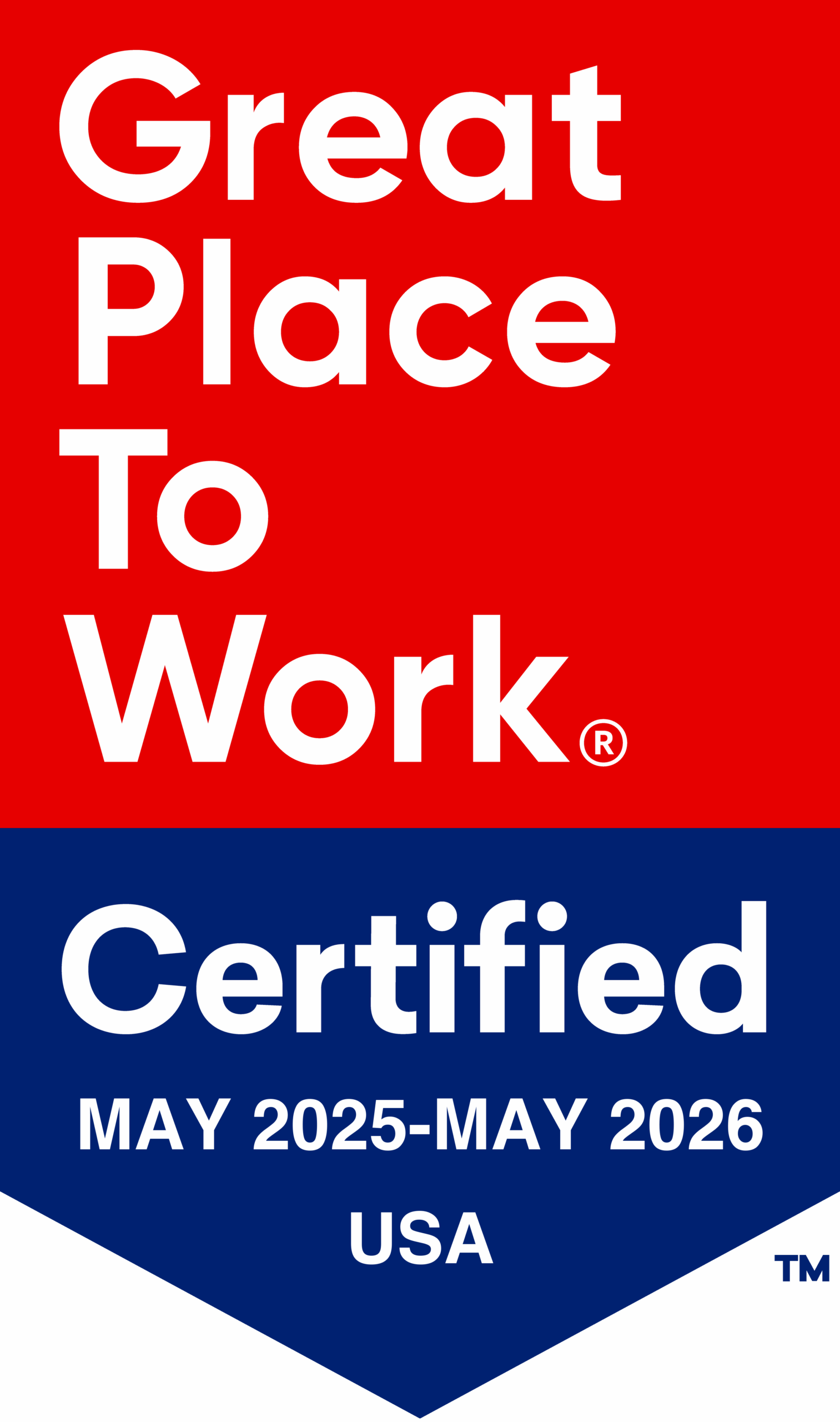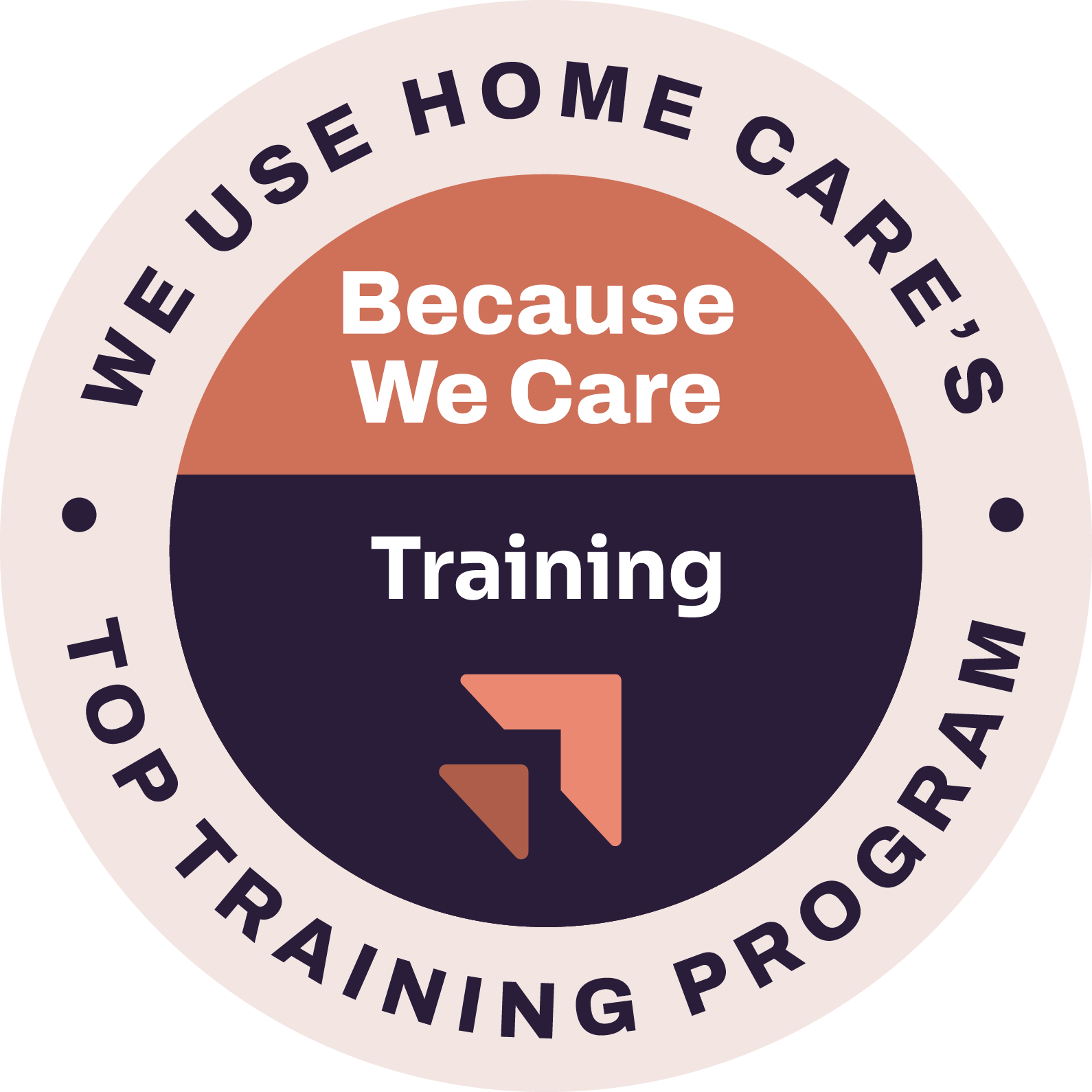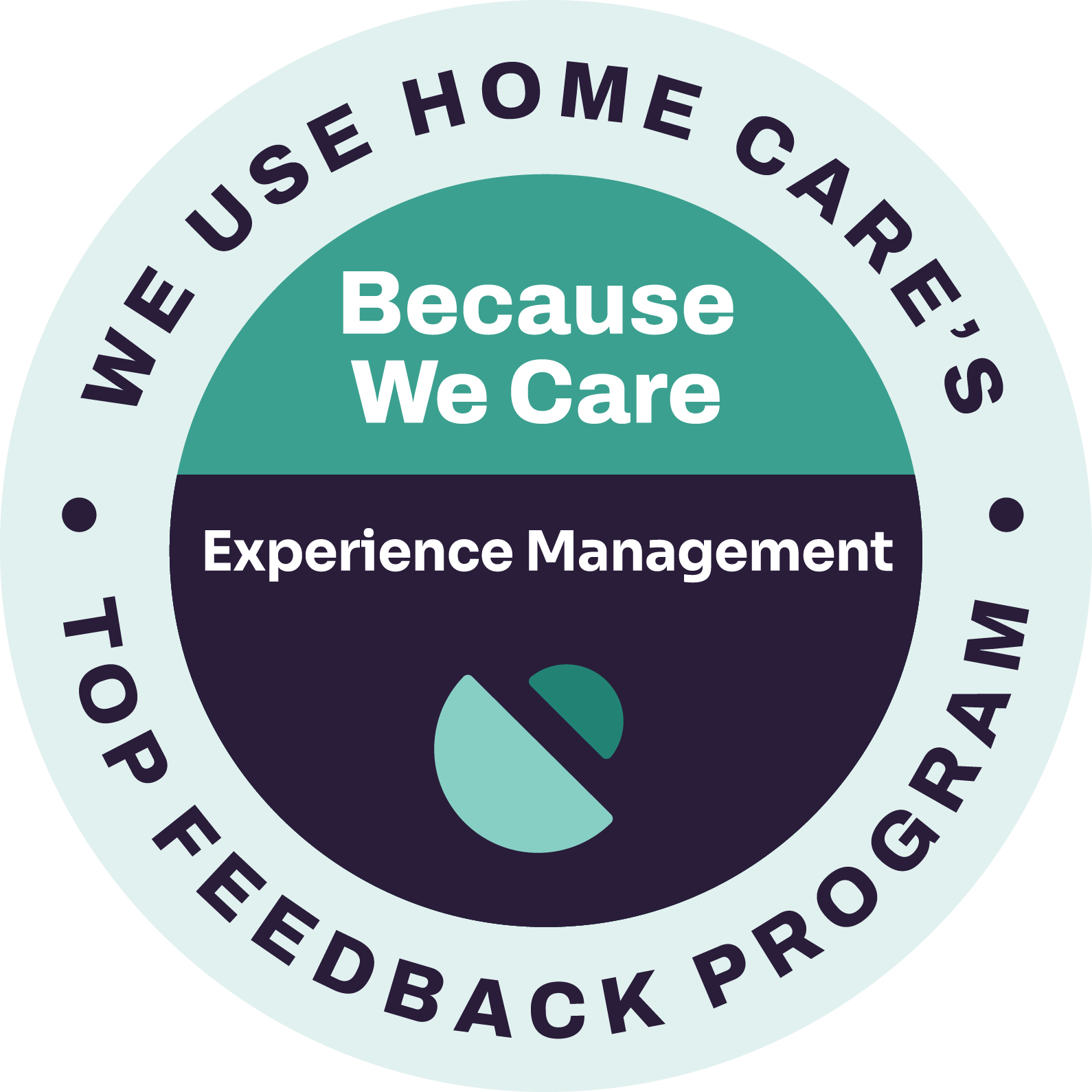Arloe, a widow living alone, slipped in the bathtub, wedging herself in an awkward and painful position. Fortunately, she was wearing her emergency pendant, and the rescue squad was able to get her out of the tub. Tom, suffering from foot numbness and poor eyesight due to his diabetes, tripped over a shoe, broke his ankle, and never walked again. In both instances, following proven fall prevention steps could have avoided those catastrophes.
Fall risks are very real, with more than one out of four Americans age 65+ falling each year, according to the U.S. Centers for Disease Control and Prevention (CDC). Falls are also the leading cause of both fatal and non-fatal injuries in people 65 and older. But did you know that most falls are preventable? Here are things to know and steps you can take to minimize the risk of falling.
Common Causes of Falls
Declining Balance and Strength: We rely on our strength and balance to keep from falling, and to catch ourselves if we start to fall. However, muscle strength and balance both tend to diminish with age.
Vision Impairment: Poor vision is a common factor contributing to falls.
Home hazards: Cluttered spaces, slippery surfaces, poor lighting, hard-to-reach items, and lack of handrails/grab bars are all fall risks in the home. Arloe had lived in the same home for over 50 years. In her 80s, it was a challenge to pick up the tub bathmat after bathing, so most of the time she didn’t use it.
Health conditions: Both chronic and sudden illnesses can compromise your balance and strength, leading to a fall. Tom’s diabetes likely contributed to his fall.
Medication Side Effects: Certain medications, even some sold over-the-counter, may cause dizziness or lightheadedness. Couple this with the fact that half of all seniors fail to take medications as prescribed, and it’s easy to understand the potential for medications to be a reason for falling.
Fall Prevention Tips
Identify Your Personal Fall Risks: Make a point of talking about your fall concerns with your doctor. If you don’t bring it up, it may not get discussed. Your risk for falling likely differs from others’ risks. Your health history and conditions, medication interactions and lifestyle choices such as diet and nutrition can all be looked at through the lens of fall prevention. If your stairwell is dark making it difficult to see, water aerobics may not be the place to focus.
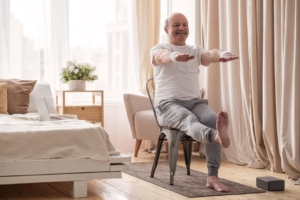
Stay Physically Active: Engaging in regular physical activity can enhance strength, balance, and flexibility. Walking, water workouts, or tai chi are excellent choices, but be sure to talk with your doctor before starting a new exercise regimen. Many Medicaid Advantage plans will pay for fitness club memberships and classes.
Footwear Matters: Choose supportive, well-fitting shoes with non-slip soles. And while “shoes off at the door” may be good for keeping carpeting cleaner, walking around in socks increases the likelihood of falling.
Home Safety: Many falls happen in bathrooms, due to wet, slippery surfaces. Grab bars should be non-negotiable, but they don’t have to be ugly. The Invisia Collection of grab bars are as stylish as they are functional! Numerous flooring options for bathrooms, from non-slip tile to textured vinyl and even cork can contribute to a safer home environment.
Poor lighting in the home is linked to an increased fall risk. Read our Lighting for Seniors blog post for ideas on improving the lighting in your home. Finally, planning storage around frequent need, particularly with kitchen items, is wise. If you have to reach up high or stoop way down for commonly used items, falls are more likely.
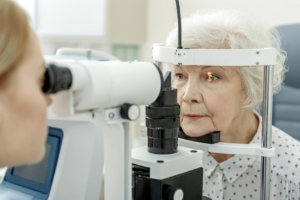
Regular Eye Exams: Regular eye exams can detect and address vision issues that could potentially lead to a fall. As the National Institutes for Health explains, “People with poor vision can easily lose stability and change different gaits to avoid obstacles, thus increasing the risk of slips, trips, and falls.”
Falls are often a combination of multiple aspects. For example, many people resist the idea of turning the lights on when getting up to use the bathroom at night because doing so will make it hard to get back to sleep. The dark, plus slippery bathroom tile or a lack of grab bars, can be a recipe for disaster. By understanding your risks associated with falls and implementing practical prevention strategies, you’ll have less reason to worry about falls.
We can help
During our initial in-home Care Assessment we provide a home safety check. We’re looking for common fall risks such as extension cords that could be trip hazards and throw rugs without non-skid backings. In providing care, our Caregivers help clear clutter and other traffic path obstacles that could cause a fall.
Failure to take blood pressure medications could lead to dizziness. Sunlight Caregivers can monitor if medications have been taken and provide reminders if those pills are still in the pillbox. Your Caregiver can also perform tasks for you that could lead to a fall, such as carrying an overflowing laundry basket down the stairs. Also, your Caregiver can more easily retrieve hard-to-reach items, eliminating those risks to your balance.
A Caregiver’s presence can help eliminate worries about falling when moving throughout the home and when bathing/dressing. Your Caregiver can assist in monitoring your exercising and provide transportation so that you can attend a workout group. Transportation services can also help ensure you can get to the pharmacy for your prescriptions, and to keep doctor’s appointments.
Don’t let worrying about falls turn into avoiding activities, thereby using your muscles less and resulting in declining strength. Our Caregivers in Des Moines, Omaha and Lincoln can be part of your plan for eliminating fall risks, staying safe and independent!

